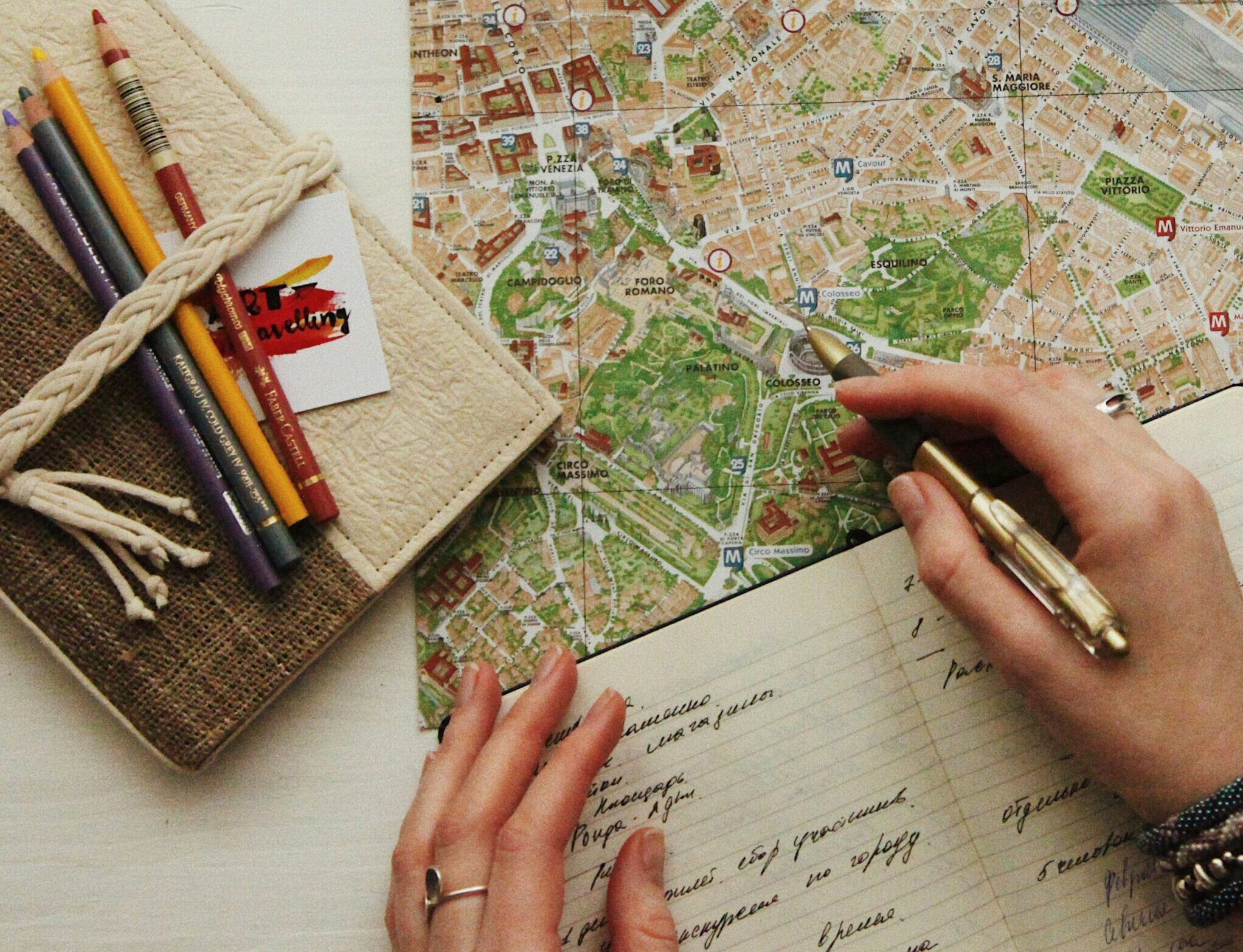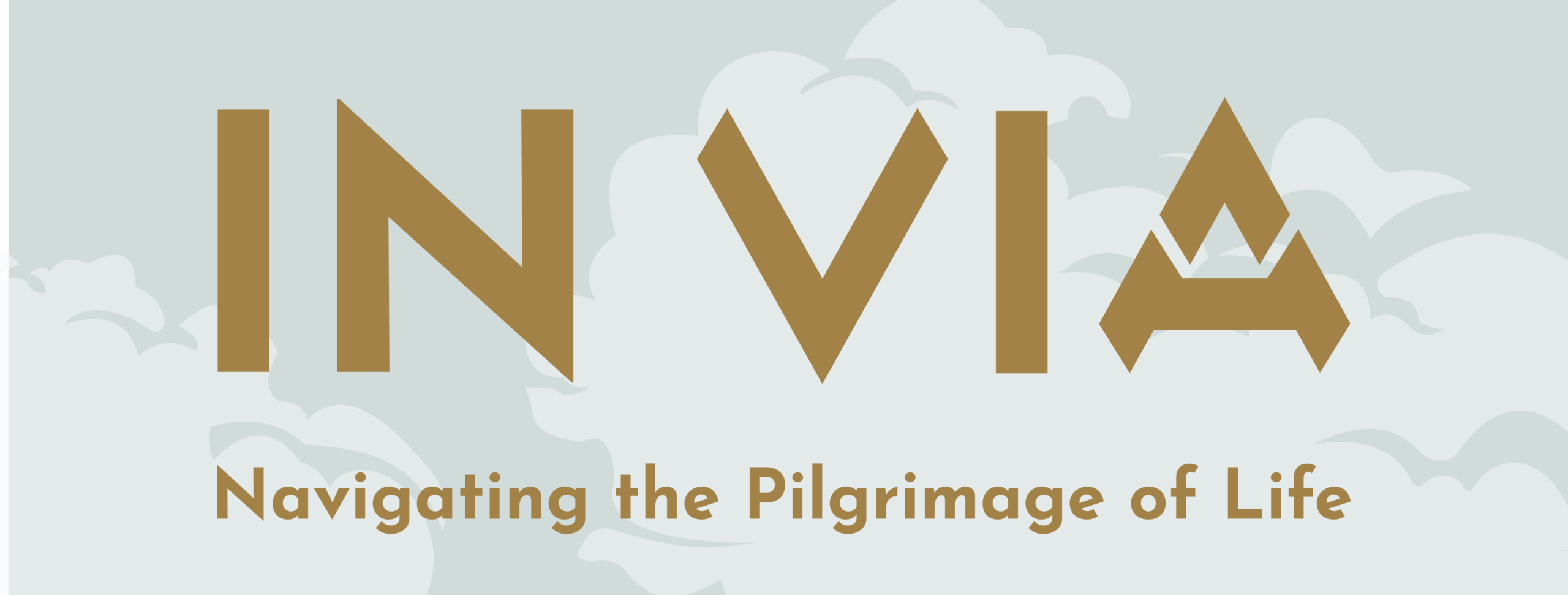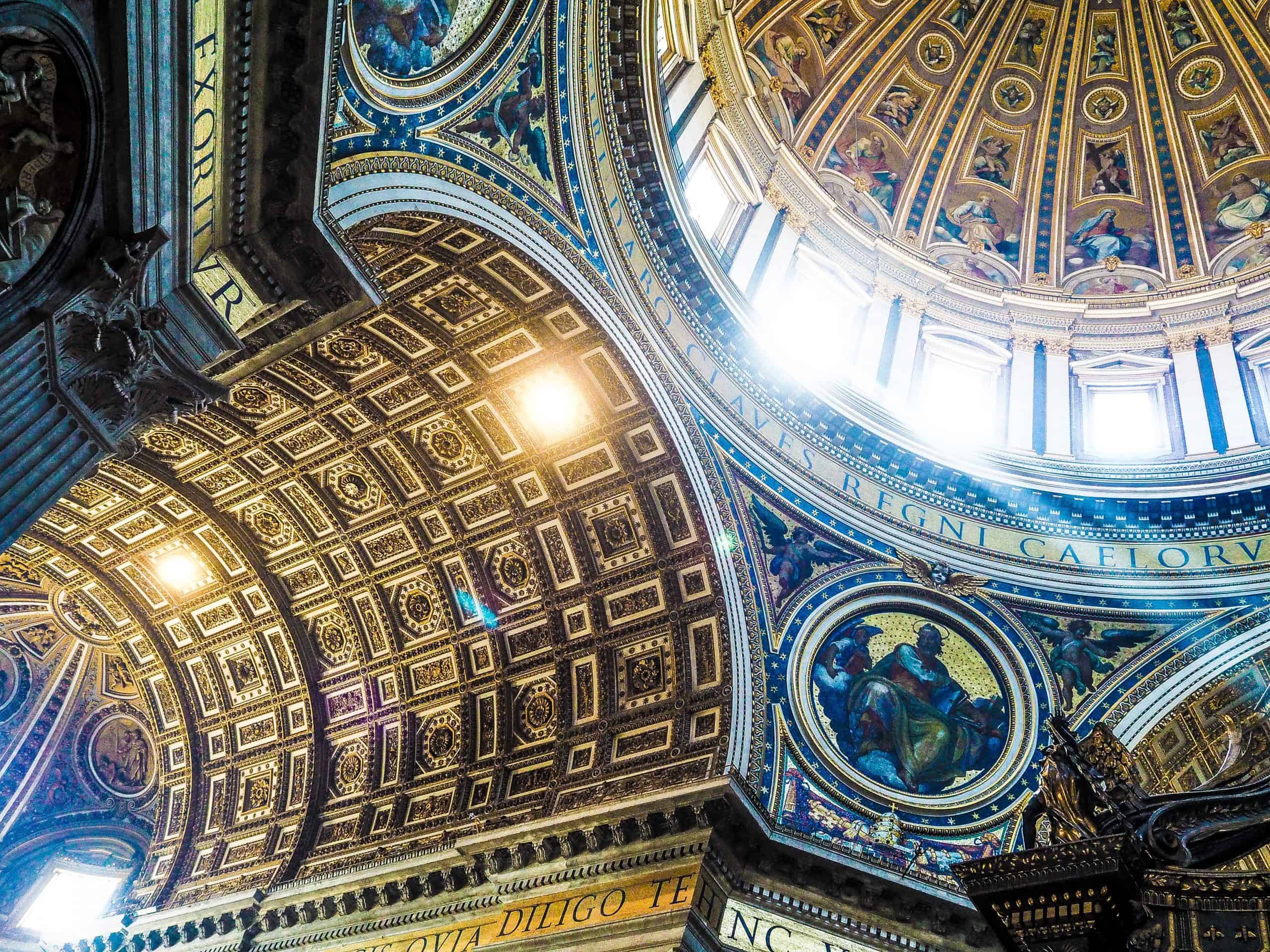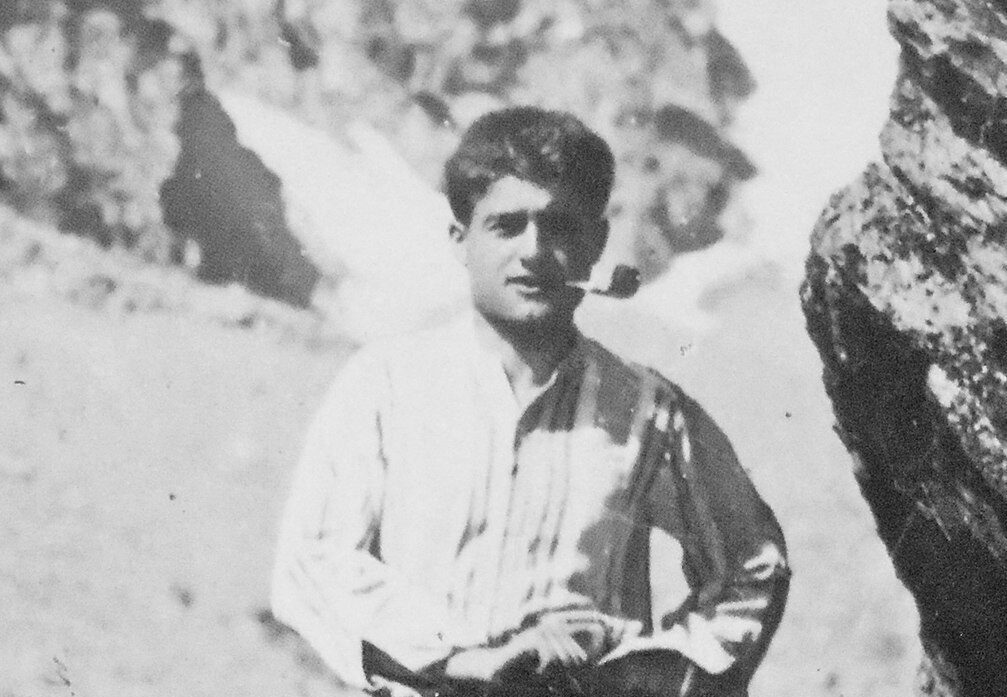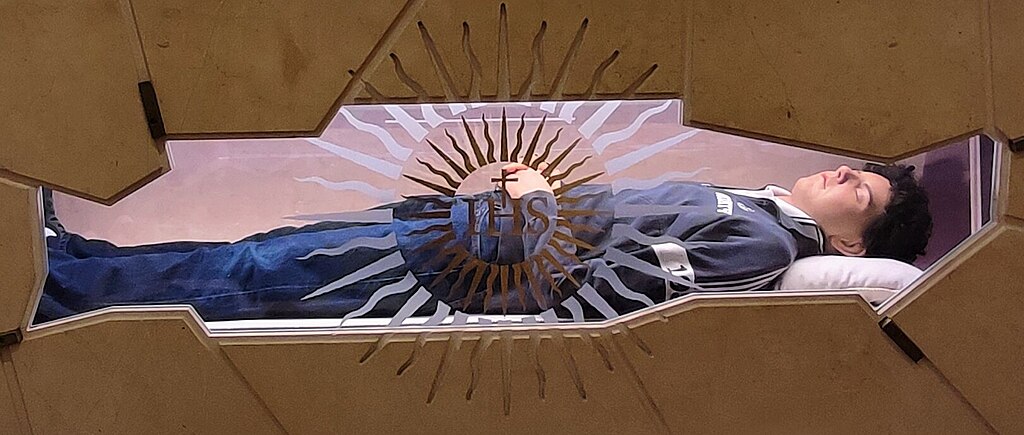By Tara Hunt McMullen
There it is.
Illuminated by the first rays of morning sunlight, we see it. The leprosy colony. It’s why we’ve traveled here, to a place that is both paradise and prison. A place of life and of death. Of illness and of recovery. Of sin and of sainthood. Just 2,000 feet below us is Kalaupapa, an idyllic and lush peninsula jutting off the island of Molokai, Hawaii.
There, too, are the makings of two, maybe three, saints. Saint Damien de Veuster, a Belgian priest, spent 16 years from 1873 until his death in 1889 caring for and ministering to leprosy patients when no one else would. He volunteered to live with them, create order within the colony and bring God to the people, even if it meant dying among them. When he succumbed to the disease, Saint Marianne Cope and a group of nuns continued the legacy Damien had created. She would spend 30 years refurbishing the settlement, caring for the orphans and providing education for the patients.
We, a group of 19 Notre Dame students and three chaperones, have been chosen by Campus Ministry to visit a site that formed these modern saints and literally follow in their footsteps. We’re asked to do more than sightsee and work on volunteer projects while on the island; we’re also asked to be open to conversion and grace as we each discern our vocation and aspire to sainthood. It is a tall and ambiguous order.
And so, the Friday before the March spring break, we find ourselves on a bus, barreling toward O’Hare airport at 5 in the morning, groggy, nervous and uncertain of what’s to come. It seems most of us signed up for the same reason: to see a part of Hawaii we may never otherwise experience. But as for what we hope to take away, that part is less clear.
When we arrive on the dark Molokai tarmac, the island’s parish priest, Father Bill Petrie, SSCC, greets us and reminds us of our intention. “Pilgrimages are filled with Godly events — but you have to look for them,” he says. “Hopefully you leave here transformed.”

The next morning, as we prepare to work with the local parishioners to repair and clean one of the four remaining Damien-built churches still in active use today, Father Petrie reiterates the point that we are being guided by Damien. “You have been invited by Father Damien,” he says. “You got an invitation, but to what? You’ll have to answer that yourself.”
The answer doesn’t come that first day as we work side by side with locals to cut down trees, weed gardens and prune bushes. Nor the second day as we hike the Halawa Valley, a lush epicenter for Hawaiian spiritual traditions, where nature and religion seamlessly intersect.
The invitation is still staring us in the face on Monday morning as we gaze down at the leprosy colony 2,000 feet below, impossibly far, in my estimation. As adrenaline and anxiety kick in, What am I doing here? plays over and over in my head.
The cliff, or in Hawaiian, the pali, is one of the largest in the world. There is no car access to that part of the island. Your options are to fly from Molokai to the bottom of the cliff or walk the three-mile path with its 26 switchbacks or sit astride a mule as it wobbles down the steep and muddy route.
When we think of pilgrimages, we think of walking, of ambling, of physical and spiritual journeying, so our group of 21 pilgrims plans to walk the trail. We’re determined to beat the mules and their inevitable droppings, so we’re there before the sun rises. It rained much of yesterday and the trail is muddy and shifty. We tighten our packs, full of enough vegetables, rice and peanut butter to sustain us for two days in the remote camp, before stepping onto the trail.

The careful walking embodies one of the themes we had selected for the trip: Be present where your feet are. In modern life I might be sitting in South Bend, emailing a colleague in New York, thinking about family in Chicago and planning when I’m going to fit a workout into my day, all in a single moment. My physical and mental presences rarely line up and are almost never concentrated on a single thing. Talking to the Notre Dame students, I realize their lives are even more overstuffed, overscheduled and overstimulated. For many, this trip is a realignment. They want to distance themselves from chaos and technology, and find time to concentrate on God.
“[At Notre Dame], Catholic faith is important, and we have that community of faith in the dorm Masses and Campus Ministry events, but we’re never really focused on our own journeys and being present to our thoughts and the thoughts of someone else in a faith experience,” says Laura Shute ’15. “The great thing about pilgrimage is that it strips away the distractions.”
To do a pilgrimage, and to do it well, context is key, says Father Jim King, CSC, ’81, ’87M.Div., ’07MNA, the former religious superior at Notre Dame. Before we came, we all attended a one-credit course that met once a week for half the semester and provided us material to read about Saint Damien, Kalaupapa and the laws that created the need for this center of isolation.
The cliff above Kalaupapa. Once lepers were deposited below it, they could never leave.
In those texts, we read that this peninsula was chosen because of the hike, the cliff. Authorities rightly assumed any leprosy patients would be too weak to make an uphill trek alive, so escape from the colony was impossible. Even while heading down, our group of able-bodied 20-somethings is huffing, and the three-mile hike still takes us an hour and a half. Thankfully, the hike is shaded by a canopy of trees and vines, keeping the rising sun off of our backs. But in time, the trail seems endless and we’re getting anxious, itchy.
Finally, a break in the trees, and all we can see is blue. The bluest water and the bluest skies I’ve ever seen. We cross a stone barrier onto an impeccable beach so pure, it’s as if human feet have never crossed it. And they don’t very often. The waves are rough and the undercurrents are worse. We’re warned that however tempting the cool water appears, the reality of its force should dissuade us from taking a dip. It’s hard not to notice the dichotomy of nature’s absolute beauty and terrible force, all in one place.
As we now know, leprosy is caused by a bacterium, mycobacterium leprae, a relative of the tuberculosis bacillus, and it causes lesions and sores, and such neurological damage as sensory loss and muscle weakness. Those with untreated leprosy are most recognizable by puffy facial sores, open wounds on the arms and legs, and disfigurements and amputations. Less noticeable but more severe symptoms can include kidney problems, bone absorption, nerve and vessel problems, blindness and a total loss of feeling to the extremities. In 1949, a sulfone drug was used to finally cure leprosy. Current treatment involves a cocktail of drugs that can render the disease noncontagious within a few weeks without the need for lifelong therapy. Still, according to the World Health Organization, a quarter of a million people are diagnosed with Hansen’s disease each year, while three million suffer its effects.
“Father Damien didn’t become a saint because he did something extraordinary. He wasn’t a homilist that people sought out. He wasn’t a remarkably talented carpenter. He was just ordinary.”
The disease has been around since the time of the Bible. The day we arrived in Kalaupapa, we celebrated Mass at Saint Philomena Church in Kalawao, the eastern portion of the peninsula that hosted those with leprosy in the early days before the site was moved west to avoid some of the rough weather. Before Mass, I noticed a smile creep over Father King’s face as he skimmed the readings for the day. In both, 2 Kings 5:1-15 and Luke 4:24-30, there is reference to a leprosy sufferer looking for healing. Coincidence, indeed.
In the reading in Kings, Naaman visits a prophet in the hope of being cured of leprosy. The prophet Elisha tells him to bathe in the Jordan seven times, but Naaman is angry, certain that such an act is not extraordinary enough to cure him. In the end, he relents and does the very ordinary act which does, in fact, heal him.
Ordinariness is worth reflecting on, says King in his homily. When we enter onto a pilgrimage, we’re looking for something huge, transformational. But instead, we visit churches. We reflect on the lives of saints and try to emulate their virtues. We pray for their inspiration to touch our lives. We pull weeds and clean out cobwebs. It’s all ordinary.
“Father Damien didn’t become a saint because he did something extraordinary. He wasn’t a homilist that people sought out. He wasn’t a remarkably talented carpenter,” King says. “He was just ordinary.”
But he was there for a population who needed him, who needed hope, who needed dignity and compassion. He was able to provide unending support and love, even when the patients disobeyed him and sinned and rejected him. He didn’t cure people or release them from their captivity; he was just present with them and for them. He became one of them.


So, King asks, why shouldn’t we be content with ordinary?
The students shift in their seats, seats that once held rows of leprosy patients. Since these students entered Notre Dame they’ve been told they have the potential to save the world, to incite change, to make a difference. Later, some of them admit that they would feel guilty, feel like they’re letting Notre Dame down, by settling for ordinary. But King’s homily lets them off the hook. It reminds them that greatness is not their call as Christians. As Christians, they’re called to love one another, to make each other’s lives easier, to give of themselves and their possessions. There is no mention of success or salaries or being busy in our universal vocation.
For me and others, those few moments sitting in a church built by Saint Damien are the most influential of the whole trip. When we return to South Bend days later, many of the students write their final projects about that homily, about commitment to ordinariness.
Back in Kalaupapa, we can’t help but be confronted with the mundane over and over again. Kalaupapa is dingy. The houses and buildings are barely shacks. Only a handful of other buildings exist: a post office, a store the size of a dorm room that preorders only the essentials for residents, a small bookshop that one of the patients operates, a clinic and a few churches. The residents get a shipment of items such as clothes, cars and appliances only once a year. Life here is simple beyond our comprehension.
It’s also eerie. As the sun sets, we’re left in utter darkness and silence. But something within each of us is not quiet. Maybe it’s the souls of the 8,000 people buried beneath us. Maybe it’s a comprehension of the reality of all we studied, of seeing the effects of the horrific disease, of hearing testimonies of how it destroyed people and families and created this place. To shake the spooky feeling, we curl into cots under sheets that don’t provide warmth and are forced to confront the fact that Damien insisted on sleeping on the floor for many of his years here.
More important than the physical space, though, is what we are reminded of when we are there. People were pushed aside, considered worthless. We could point a finger and ask, “How could they have been so insensitive and cruel?” Or, as pilgrims and as Christians, we could consider, Who are the lepers in our own lives? Are there people you cast out? People who wear on your patience? How can we be like Damien and embrace and serve them?
Anyone come to mind? They sure do in my life.

Before we began the trek back up the cliff, back to topside Molokai, back to the mainland, back to South Bend, back to our normal lives, we took a half hour of silence. We sat on that beautifully violent beach and prayed and contemplated and prepared.
With my back on some stones and my feet getting tickled by the ebb and flow of the water’s tide, I thought about Kalaupapa, about Damien, about the students around me and about ordinariness.
Perhaps we had all hoped and prayed for spiritual revelation. After all, in these few miles, two saints were formed. Maybe we hoped we would feel that, be lifted by it, see a spiritual journey crest for a moment. It didn’t happen that way. It was fascinating. The stories were gripping. The place was heavenly and hellish all at once. It was like nothing most of us have ever seen, but the feeling was missing.
Instead, we’ve returned to ordinary life. Despite spending a week thinking about sainthood and compassion, thinking how we can be better, do better, love better, I think we’d all admit there are days we don’t. For most of us, there was no moment of epiphany, no moment of extraordinary.
But King has said that discernment isn’t logical, and wisdom doesn’t come when you shout for it. All this trip was meant to do, he says, was plant a seed, nourish its growth and hope that someday, in one of these lives, someone is changed.

Tara Hunt McMullen is a former associate editor of Notre Dame Magazine and is currently a freelance writer in North Carolina. This piece is an abridged version of an essay originally appearing in the Summer 2015 issue of Notre Dame Magazine. Tara assisted with leading this pilgrimage through Campus Ministry at the University of Notre Dame. This particular pilgrimage was not at all affiliated with or run by Verso Ministries, mainly because we didn’t exist then!


